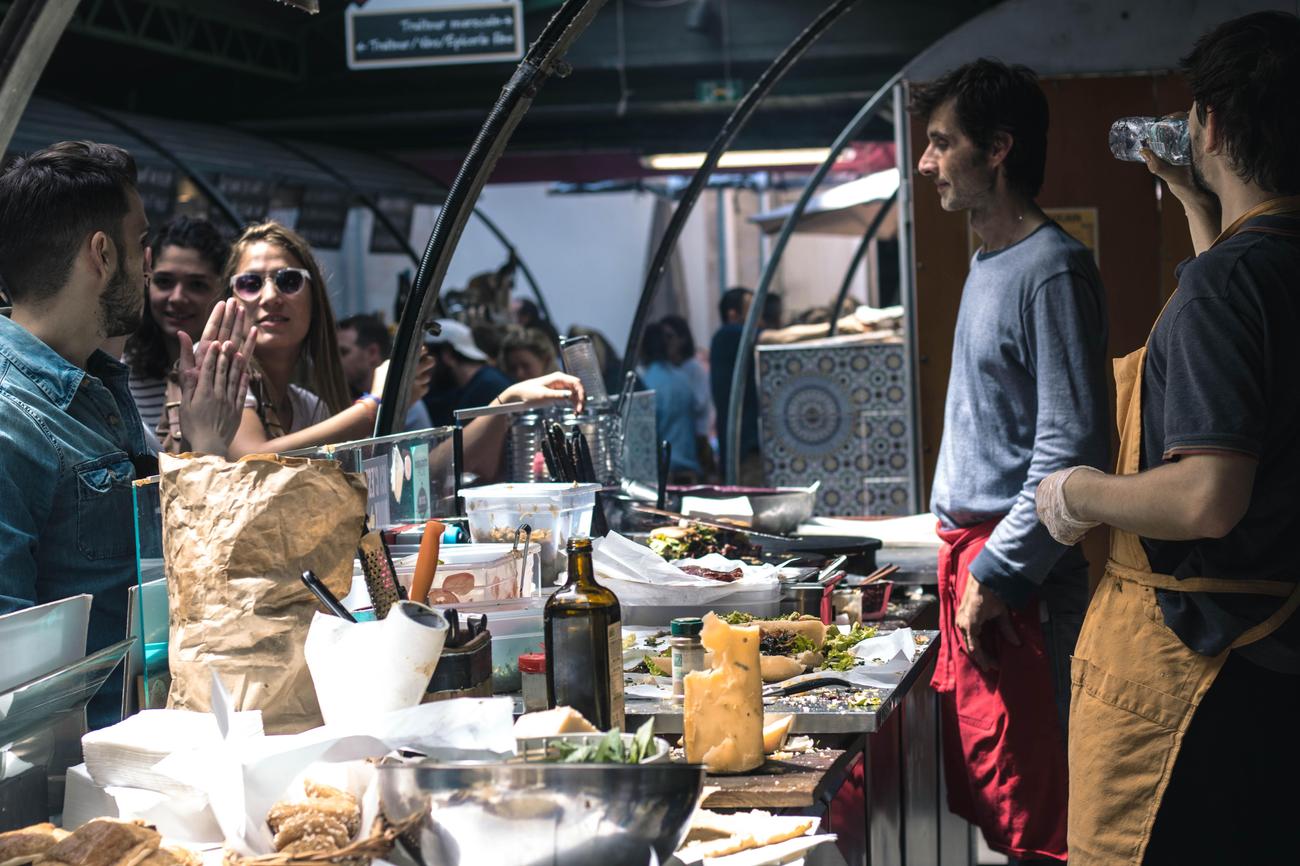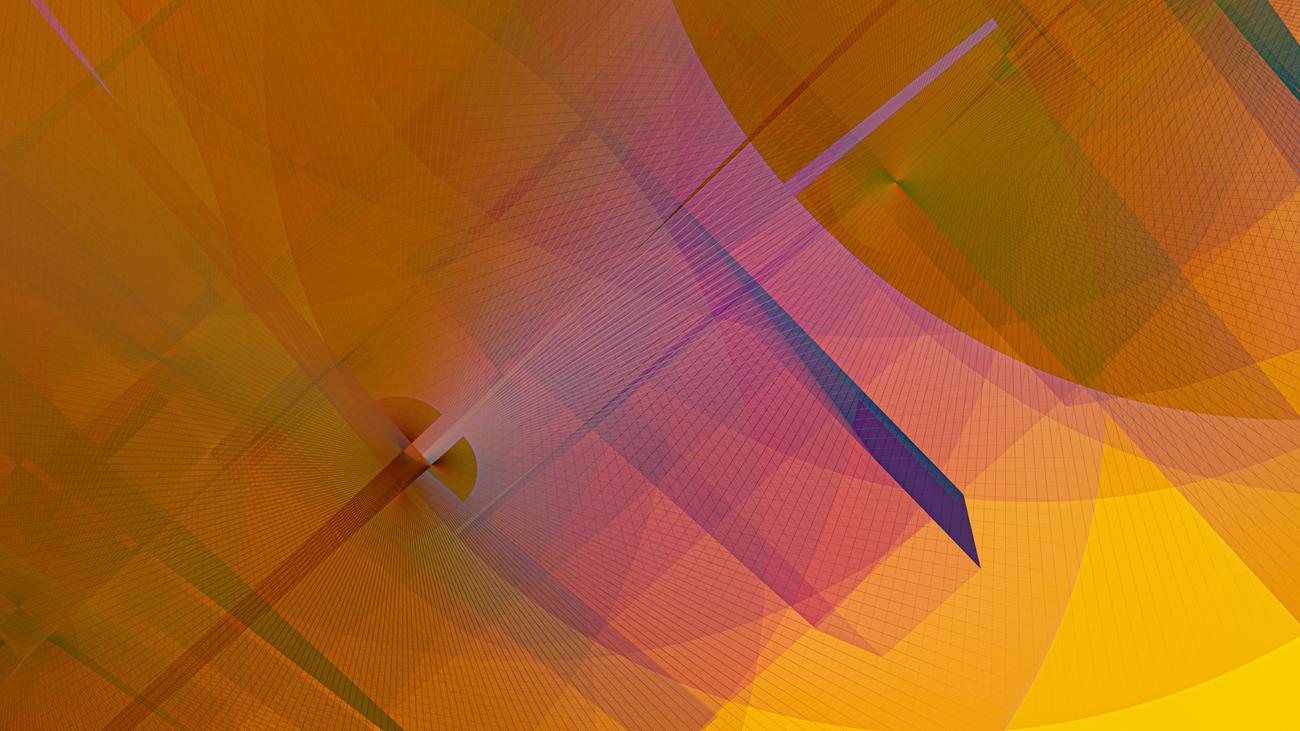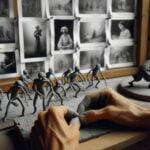Are you curious about how animation works? Do you have burning questions about the fascinating world of animation? Look no further! In this article, titled “Answering Common Questions About Animation: Insights from an Experienced Animator,” we dive deep into the realm of animation to provide you with invaluable insights and answers. As an experienced and knowledgeable animator with over a decade of professional experience, I am here to share my expertise and passion for the craft. Whether you’re interested in 2D or 3D animation, character design, storyboard development, or motion graphics, I’ve got you covered. Get ready to have all your animation questions answered by delving into this informative article. Let’s embark on an exciting journey into the magic of animation together!

Questions About Animation
As an experienced animator, I often come across questions about animation from those who are new to the industry or curious about the craft. In this article, I aim to address some of these common questions and provide valuable insights from my years of experience. So, let’s dive right in!
Staying Up-to-Date on Animation Trends and Software
One of the most frequently asked questions about animation is how to stay current with the latest trends and software in the industry. Animation is an ever-evolving field, with new techniques and tools emerging all the time. To stay up-to-date, it’s crucial to engage with the animation community by attending conferences, workshops, or webinars, and following industry professionals on social media platforms. Additionally, subscribing to animation magazines and online newsletters can provide valuable insights and updates. By continuously learning and experimenting with new software, you can keep your skills sharp and stay on top of industry trends.
“Staying up-to-date is essential in animation, as it allows you to adapt to new techniques and remain competitive in the industry.”
The Concept and Process of Rigging in Animation
Rigging is a vital aspect of animation that involves creating a skeleton or a digital framework for characters. It allows animators to articulate and control a character’s movement, making it appear more realistic. Rigging involves setting up joints, controls, and constraints to define how the character will move and deform. It requires a solid understanding of anatomy and the physics of movement. Rigging can be a complex process, but mastering it is crucial for creating believable and expressive character animations.
“Rigging is like building the inner structure of a character, giving it the flexibility and control it needs to come to life on the screen.”
Creating a Storyboard for Animation
A storyboard is a visual representation of an animation, much like a comic strip. It serves as a blueprint for the final animation, allowing animators and directors to plan out the sequence of shots, camera angles, and character movements. Creating a storyboard is an essential step in the animation process as it helps to visualize and refine the story before investing time and resources into the production. It requires strong storytelling skills, an understanding of shot composition, and the ability to convey emotions and actions through illustrations.
“A well-crafted storyboard acts as a roadmap for your animation, guiding you through the entire creative process.”
Common Animation Interview Questions and Example Answers
When preparing for an animation job interview, it’s essential to familiarize yourself with common interview questions and craft impressive answers. Some typical questions may include:
- “Tell us about your animation experience and background.”
- “How do you handle feedback and criticism?”
- “Can you walk us through your animation process?”
- “What software and tools are you proficient in?”
- “Describe a challenging animation project you worked on and how you overcame it.”
Preparing thoughtful responses to these questions can showcase your expertise, problem-solving skills, and passion for animation, increasing your chances of landing the job.
“By effectively conveying your experience, skills, and passion for animation, you can leave a lasting impression on your potential employers.”
The Difference Between Animation and Cartoons
A question that often arises is the distinction between animation and cartoons. While the terms are sometimes used interchangeably, there is a subtle difference. Animation is a broad term that encompasses various techniques used to bring still images or objects to life through movement. It includes both traditional hand-drawn animation and computer-generated animation. On the other hand, cartoons typically refer to a specific style of animation characterized by exaggerated, often humorous, and simplified visuals. So, while all cartoons are animations, not all animations are cartoons.
“Understanding the nuances between animation and cartoons can help you appreciate the diverse range of styles and techniques in the world of animation.”
The Definition and Significance of Key Frames in Animation
In animation, keyframes are crucial elements that define the starting and ending points of an action or movement. They serve as a reference for the smooth transition between poses or frames. Keyframes help maintain consistency and continuity in an animation by providing essential positions that depict character movements or changes in scenery. They significantly reduce the animators’ workload by providing a framework from which the computer software can interpolate the in-between frames automatically.
“Keyframes act as anchor points, allowing animators to focus on the critical moments and details of an animation.”
The Challenges and Styles of Animation
Animation, like any artistic endeavor, comes with its own set of challenges. One common challenge is creating realistic movements and expressions in characters. It requires a keen eye for observation and attention to detail. Another challenge is managing the complexity of the animation process, which involves juggling multiple layers, timings, and character interactions.
In terms of styles, animation offers a vast array of options, ranging from traditional 2D hand-drawn animation to cutting-edge 3D computer-generated imagery. Each style has its unique characteristics, and the choice largely depends on the project’s requirements, budget, and artistic vision. Exploring different styles broadens an animator’s skill set and opens up new creative possibilities.
“Overcoming challenges and experimenting with different animation styles pushes animators to grow and evolve their craft.”
The Skills and Qualifications Needed for a Career in Animation
To thrive in the animation industry, certain skills and qualifications are valuable. Firstly, a strong foundation in art and design is essential, as it forms the basis of creating visually appealing animations. Proficiency in animation software such as Adobe Animate, Maya, or Blender is also crucial. Understanding the principles of animation, such as timing, weight, and anticipation, is vital for creating believable movements. Additionally, strong communication and problem-solving skills, teamwork, and an ability to give and receive constructive feedback are essential in the collaborative animation process.
In terms of qualifications, while a degree in animation or a related field can be beneficial, it is not always a prerequisite for success in the industry. Showcasing a strong portfolio that demonstrates creativity, technical skills, and a passion for animation is equally important.
“A combination of technical skills, creativity, and a drive to continuously improve is key to building a successful career in animation.”
The Role of Collaboration and Decision-Making in Animation Projects
Animation projects are rarely solo endeavors. Collaboration and effective decision-making play pivotal roles in creating seamless and compelling animations. Working closely with a team allows for a diversity of ideas, skill sets, and perspectives, resulting in richer and more well-rounded animations. Clear and open communication, respect for others’ expertise, and the ability to compromise are essential for smooth collaboration. Decisiveness is equally important, as animators often face tight deadlines and need to make quick decisions to keep the project on track.
“Successful animation projects are the result of collaborative efforts and effective decision-making, ensuring the final product exceeds expectations.”
The Value of Having a Degree in Animation
While having a formal degree in animation can provide a solid foundation and credibility, it is not the only path to success in the industry. What truly matters is the demonstration of skills, creativity, and expertise through a well-curated portfolio. Employers are often more interested in the quality of your work, your technical abilities, and your ability to meet deadlines and work within a team. That being said, a degree can provide structured learning, exposure to industry professionals, and opportunities for networking, which can be advantageous, especially for those new to the field.
“In the animation industry, it’s your skills, experience, and passion that speak the loudest, regardless of whether you have a degree or not.”
Questions to Ask Animation Clients When Working on Animated Videos
When working with animation clients, it’s important to ask the right questions to better understand their expectations and requirements. Some key questions to consider asking include:
- “What is the target audience for the animated video?”
- “What is the primary message or goal you want to convey?”
- “Are there any specific visual styles or references you have in mind?”
- “What is the desired length of the video?”
- “What are the project deadlines and budget constraints?”
Asking these questions upfront helps ensure a clear understanding and alignment between the client’s vision and the animator’s capabilities, resulting in a successful collaboration.
“By asking the right questions, you can tailor your creative approach to meet the client’s specific needs and deliver a compelling animated video.”
The History and Origins of Animation
Animation has a rich and fascinating history that dates back centuries. The earliest form of animation can be traced back to cave paintings where sequential images were used to depict movement. Over time, various techniques were developed, including the zoetrope, flipbooks, and later, the invention of celluloid sheets and the digital revolution. Animation has evolved from simple hand-drawn images to the complex computer-generated imagery we see today. It has become an integral part of the entertainment industry and has revolutionized storytelling in film, television, and advertising.
“Understanding the evolution of animation allows us to appreciate the countless innovations and advancements that have shaped the industry we know today.”
In conclusion, answering common questions about animation provides valuable insights into the world of animation. From staying up-to-date on industry trends and software to understanding the significance of keyframes and the challenges of collaboration, animation is a multifaceted field that requires a blend of technical skills, creativity, and passion. By addressing these questions, I hope to inspire and inform aspiring animators and enthusiasts, helping them embark on their own animation journeys.
Animation is a fascinating world that brings imagination to life. If you’re curious about fun facts and behind-the-scenes information about animation, we’ve got you covered! Dive into the realm of animated wonders with our curated collection of fun facts about animation. Discover the evolution of this incredible art form and learn about the techniques used to create your favorite animated movies, TV shows, and more. Get ready to be amazed by clicking on this thrilling link: fun facts about animation.
Article Section: Genndy Tartakovsky’s Insights on Animation
[youtube v=”4uvlCjcT7oM”]
Genndy Tartakovsky, an accomplished animator, director, and creator of popular shows like Dexter’s Lab, Samurai Jack, Primal, and Unicorn Warriors Eternal, recently took the time to answer fan questions about animation on Twitter. In this article section, we’ll delve into some of his fascinating insights on various aspects of animation, ranging from smoothness and fluidity in 2D animation to the process of directing an animated show.
Smoothness and Fluidity in Animation
When it comes to achieving smooth and fluid animation, Tartakovsky explains that it all depends on the resources available. Typically, animators work at 24 frames per second, ensuring that each frame captures a smooth transition. However, due to budgetary or time constraints, animators may have to reduce the number of frames, resulting in less fluid animation. While smoothness is important, Tartakovsky emphasizes that the focus should be on creating compelling stories, well-developed characters, and engaging humor.
The Mystery of Pantless Cartoon Characters
One Twitter user raised an age-old question: why do many cartoon characters not wear pants? Tartakovsky admits that it remains a timeless mystery, often dependent on the creator’s artistic choices. Sometimes, a character being naked is simply a design choice, though it may be accompanied by accessories like a bow tie or other clothing items. In the end, the absence of pants doesn’t seem to deter viewers as long as the character’s personality and storytelling are engaging.
Voice Acting and Animation Synchronization
When asked about the relationship between voice actors and animators, Tartakovsky explains that the voices come first. The actor records their lines, which are then edited into the shots for the animators to synchronize the movements with the dialogue. This synchronization is crucial for achieving realistic lip-syncing and ensuring that the characters’ actions align with their spoken words. However, Tartakovsky notes that in some cases, voice recordings may occur after the animation is complete, as seen in his show Primal.
Repurposing Shots in Animated Sequels
In the context of animated sequels, Tartakovsky discusses the practice of repurposing shots from previous movies. He shares that when creating Hotel Transylvania 2, they reused character designs and the castle from the first film. However, technology advancements necessitated some adjustments to incorporate the upgraded tools used by the studio. Typically, unless the setting changes, animators can save time by repurposing certain elements for sequels.
The Principles of Animation
Tartakovsky briefly touches on the twelve principles of animation, highlighting three key principles: squash and stretch, anticipation, and follow-through. Squash and stretch involve distorting an object or character to convey movement or impact. Anticipation is the preparation before a major action, while follow-through refers to objects or body parts continuing to move after the initial action. According to Tartakovsky, mastering these principles sets the foundation for understanding more complex animation techniques.
The Importance of Blinking in Animation
Believe it or not, animators sometimes forget to animate characters blinking, but it’s an essential detail in keeping them alive and authentic. Blinking can add a sense of life and even breathing to characters. While animators are generally aware of this and include blinking when characters are idle, it’s always a good observation to spot instances when characters may not blink as frequently as they should.
Armatures, Rigs, and Animation
In CG animation, Tartakovsky explains that “rigging” refers to creating a skeletal structure, or an armature, for characters. The rigging process involves placing points or joints on the armature to allow for movement, such as bending the character’s arms or legs. The armature serves as the foundation for the rigging process, which is crucial for animating characters realistically in a 3D environment.
The Signature Animation Style of Hotel Transylvania
Tartakovsky attributes the success of Hotel Transylvania’s animation style to blending classical animation principles with CG techniques. By incorporating elements such as sculpting unique facial expressions, pushing squash and stretch, and defying gravity, the team was able to create a visually stunning and fun animation style. Additionally, the extreme nature of their animation required animators to manually animate the character’s clothing to maintain the desired dynamics.
Creating Cartoon Characters
For those interested in creating their own cartoon characters, Tartakovsky shares his process of starting from the character’s persona. He believes in understanding the character from the inside out, observing their emotions and personality traits. This understanding helps inform the character’s physical attributes and shapes. Throughout the design process, characters naturally evolve and may undergo changes as the artist gets more comfortable and connected with them.
The Short Episodes of Clone Wars
Tartakovsky sheds light on the reason behind the shorter episodes of the first Clone Wars series. Initially, George Lucas allowed only one-minute episodes, but Tartakovsky pushed for a minimum of three to five minutes to tell more substantial stories. The team’s prior work on Samurai Jack helped persuade Lucas to grant them more time. This decision led to the development of impactful and action-packed episodes that laid the foundation for future expansions of the show.
The Revitalization of Animation Through Who Framed Roger Rabbit
Who Framed Roger Rabbit played a significant role in reviving the animation industry, which was experiencing a decline in the late 1980s. Tartakovsky explains that the film not only blended live-action and animation seamlessly but also brought together iconic characters like Bugs Bunny and Mickey Mouse. This combination showcased the potential and fun of animation, inspiring a renewed interest in the medium.
The Director’s Role in an Animated Show
Tartakovsky shares insights into his role as a director in an animated show, emphasizing the importance of having a clear vision and allowing everyone to contribute to the creative process. He recounts a formative experience while working on Dexter’s Lab when he realized that his job as a director was to translate a voice actor’s performance into an entertaining visual experience. This realization helped shape his approach to directing animated shows.
The Favorite Samurai Jack Episode
Choosing a favorite episode from Samurai Jack is no easy task for Tartakovsky, but he reveals that the “Blind Archers” episode holds a special place in his heart. This episode stood out due to its simplicity, cool story, and distinctive design. It perfectly balanced artistic elements, like the use of darkness and audio cues, with captivating action. While Tartakovsky avoids picking favorites, he notes that this episode left a lasting impact on the show’s team.
The Role of Storyboards in Animation
When it comes to storyboarding, Tartakovsky explains that a new storyboard is created for every cut, change of emotion, and significant event in a scene. Storyboards play a crucial role in visualizing the story and guiding the animators. Tartakovsky points out that storyboards have become increasingly important, with more panels being used to ensure clarity and aid storytelling. This detailed approach allows for a more focused animation process and fluid storytelling.
In conclusion, Genndy Tartakovsky offers a wealth of knowledge and insights into the world of animation. From the technical aspects of achieving smooth animation to the artistic choices and creative processes, Tartakovsky’s expertise sheds light on what goes on behind the scenes. Whether it’s understanding the principles of animation or the director’s role in bringing animated shows to life, his responses provide valuable insights for aspiring animators and animation enthusiasts alike.

FAQ
What is the importance of staying up-to-date on animation trends and software in the animation industry?
Staying up-to-date on animation trends and software is crucial in the animation industry for several reasons. Firstly, it allows animators to keep their work relevant and appealing to audiences. By staying aware of current trends, animators can incorporate popular elements into their work, making it more visually engaging and relatable. Additionally, staying updated on software advancements ensures that animators are using the most efficient and effective tools available. New software often introduces time-saving features and improved capabilities that can enhance the quality of animation projects. Overall, staying up-to-date on animation trends and software helps animators stay competitive and maintain their professional edge.
Can you explain the concept and process of rigging in animation?
Rigging is an essential process in animation that involves creating a skeleton or structure for a character or object. This skeleton defines the movement and behavior of the character or object, allowing animators to manipulate and animate it easily. The rig consists of a hierarchy of interconnected bones or control points, which can be manipulated to create different poses and movements. The process of rigging includes setting up the bones, adding controls for easy manipulation, and assigning weights to ensure smooth deformations when the character moves. Rigging is a complex task that requires a deep understanding of anatomy, physics, and animation principles. A well-rigged character or object is essential for creating realistic and believable animations.
How do you create a storyboard for animation?
Creating a storyboard is a crucial step in the animation process as it helps visualize and plan the sequence of events in a story. To create a storyboard, animators typically start by breaking down the script or concept into individual scenes or shots. Each shot is then drawn or sketched sequentially on a storyboard panel, accompanied by relevant notes or descriptions of the action and dialogue. The storyboard serves as a blueprint for the animation, allowing animators to plan camera angles, transitions, and timing. It also helps convey the director’s vision and allows for collaboration and feedback from other team members. Creating a well-structured and detailed storyboard helps streamline the animation process and ensures a cohesive and compelling final product.
What are some common animation interview questions and example answers?
During an animation interview, candidates may be asked various questions to assess their technical skills, creativity, and problem-solving abilities. Some common animation interview questions include:
Can you describe your process for creating animations from concept to completion?
Example answer: “My process begins with understanding the project requirements and the target audience. Then, I create concept sketches and storyboards to plan the animation. After that, I work on character design, rigging, and animating the scenes. Finally, I add sound effects and polish the animation using post-production software.”How do you handle tight deadlines and multiple projects simultaneously?
Example answer: “I prioritize tasks based on deadlines and create a detailed production schedule to manage my time effectively. I also ensure clear communication with the team to delegate tasks and collaborate efficiently. Additionally, I utilize time-saving techniques and leverage my experience to deliver high-quality work within tight timeframes.”
These are just a few examples, but it’s essential to be prepared for a range of interview questions and tailor your responses to highlight your skills and experiences.
What is the difference between animation and cartoons?
While animation and cartoons are often used interchangeably, there is a subtle difference between the two. Animation is a broader term that encompasses various techniques used to bring still images to life, including 2D and 3D animation, motion graphics, and visual effects. It can be used in a variety of mediums, such as films, TV shows, video games, and advertisements. On the other hand, cartoons specifically refer to animated programs or visual styles that are typically humorous and playful. Cartoons often feature exaggerated characters, vibrant colors, and comedic narratives. While all cartoons are a form of animation, not all animations are cartoons, as animation can range from serious and dramatic to abstract and experimental.
- Guatemala vs. Costa Rica: Plan Your Trip Smartly - April 16, 2025
- Master Types of Pumps: Ultimate Guide to Selection - April 16, 2025
- Unlock Types of Makeup Secrets: Master Any Look Now - April 16, 2025
















